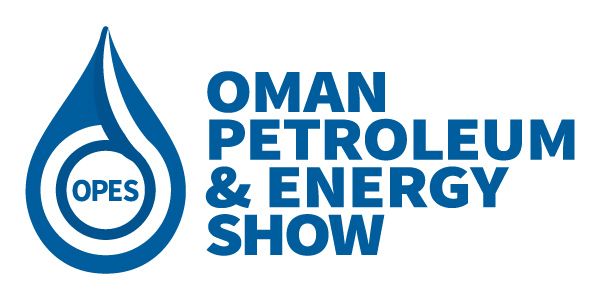BY AYOBAMI ADEDINNI
Commercial banks operating in the country are cautiously investing in the Oil and Gas sector despite the increased global oil prices, a top official of one of the banks disclosed to PETROLGASREPORT
He expressed that Nigerian banks are still adopting a “cautiously optimistic approach” on lending to avoid a surge in Non-Performing Loans (NPL) despite a relatively stable outlook for the economy and recent increase of Oil price to $70 per barrel.
He noted that the impact of Nigeria’s economic downturn was severely felt in 2016 as commercial banks are yet to over the impediment.
According to him, the economy outlook this year is relatively stable post-recession, a cautiously optimistic approach has been adopted by commercial banks on lending to the Oil & Gas sector to avoid a surge in increased impairment as stipulated by the International Financial Reporting Standard (IFRS) 9 that commenced this year.
The introduction of IFRS 9, according to analysts, may lead to local banks cutting down the size of their credits to the Organized Private Sector (OPS) specially Oil & Gas as they struggle to protect their books from the impact of making provisions for bad and doubtful loans.
The Nigerian banking industry is heavily exposed to the oil and gas sector, which contributes over 70 per cent of government revenue and 90 per cent of all exports.
With a high level of exposure to the oil and gas sector, which unfortunately is facing a sustained period of low oil prices, non-performing loans in Nigerian banks have reached alarming proportions.
In swift reaction, Research Analyst at Pan Africa Capitals Plc, the Investment Banking arm of PanAfrican Capital Group, Mr. Moses Ojo, said commercial banks need to exercise caution because the current price upsurge might not be sustainable adding that the banks are currently making moves to recover their investments with the recent rise in price.
In his words, “When the initial plunge in oil price started, it had serious negative effects on banks. You know, the banks invested a lot in the sector making them have toxic loans because of the decline.
“The price plunged so much that it got to about $38 per barrel. So as a result of that, banks started accumulating toxic assets again to the extent that NPL rose from 5 percent to about 15 per cent as at the end of 2016 which of course is the official figure.
“If we should look critically, we are going to discover it will be more than that.
“ It is a serious source of concern for all stakeholders in the economy in the sense that some people are even asking for AMCON 2 that the federal government should set up another AMCON that will buy over all these toxic assets.
“What banks are doing now is to recover what they have invested with the increase in the prices of Crude Oil.
“It is not actually the right time for them to start looking at investing again. Another reason is that they are not sure if the current upsurge is going to be sustainable because there might be crisis in the Oil producing nations
“The activities of OPEC have helped to keep the price up but we don’t know what steps the likes of USA are going to take or what the likes of Saudi Arabia will do in terms of pumping into the world market.
On recent projections of the price hitting $100, he said, “I don’t see the prices going above $80 per barrel.
“As Oil price rises, it is going to hurt some economies as well such as the Oil importing economies and even some Oil producing nations. It won’t be in the interest of anyone for the price to hit $100 when there is nothing to sustain it.
“If it is being driven by industrial actions, that is understandable but we all know that china is also slowing down unlike what it used to be because china was the one that normally drives the growth of the global economy,” he added.
Economist and Managing Consultant, BIC Consultancy Services Ltd, research and consultancy services firm, Boniface Chizea, believed in order to forestall a repeat of high toxic assets, banks should engage the service of Risk Managers.
In his words, “The oil market is a risky investment in a way. Today, it looks as if the price will stay up but it is bound to crash.
“However, the volatility should not make the banks not to invest.
“There was a time it hit $100 but those banks did not exercise good credit risk judgment in investing in the sector. They should have good credit risk managers who would analyze and give them advice.
“But I don’t think there should be anything happening in the market that should make banks not to invest in the sector,” he noted.
From a different viewpoint, analysts at CardinalStone, predicted improved banking sector investment in the upstream Oil & Gas sector that stands to boost asset quality in 2018.
They said, “the average exposure of banks under our coverage represents 28.8per cent of total loans. Hence, with the sustained peace as well as higher crude oil prices, we expect a significant improvement in the cash flows of upstream oil & gas companies which will subsequently translate to improved loan performance, reduced impairment and increased write-backs in 2018.”
“We expect Guaranty Trust Bank, FBN Holdings and Diamond Bank Plc to benefit the most given their significant relative exposure of 34.0per cent, 37.4per cent and 40 per cent respectively to Oil & Gas sector.
“Overall, we anticipate a general decline in impairment provisions as well as marked improvement in loan and provision write-backs in 2018. Thus, we expect cost of risk amongst our coverage banks to ease by 50basis points to 0.7per cent by 2018.”
‘Banks cautiously investing in Oil & Gas sector’- Source
0
0
SHARES
Ayobami Adedinni
Ayobami founded The Energy Intelligence in 2017. He is an experienced energy journalist having previously worked for two national dailies. At The Energy Intelligence, Ayobami provides market intelligence to leaders in the African clean energy space. When he's not writing, he's busy daydreaming.
Newsletter
Join thousands of other senior energy decision makers and gain access to exclusive stories and reports
SUBSCRIBE
Category
- Amazons in Energy
- Bio Energy
- Clean Cooking
- Climate Change
- EnergyPreneur
- Environment
- Events
- Food and Pharmaceuticals
- Gas
- Geothermal Energy
- Governance
- GreenTech Made in Africa
- Hydro Power
- Hydrogen Power
- Industry News
- Insight
- Logistics
- Magazine
- Marine Services
- Nuclear Power
- Oil
- Partners
- Press Release
- Recycling
- Solar Energy
- Solid Minerals
- Sustainable Mobility
- Technergy
- Uncategorized
- Wind Power
Our Mission
The Energy Intelligence is dedicated to focusing on all the key trends and developments that are emerging from within the Global Energy industry through Business Intelligence, Networking and Strategic Communications.




















